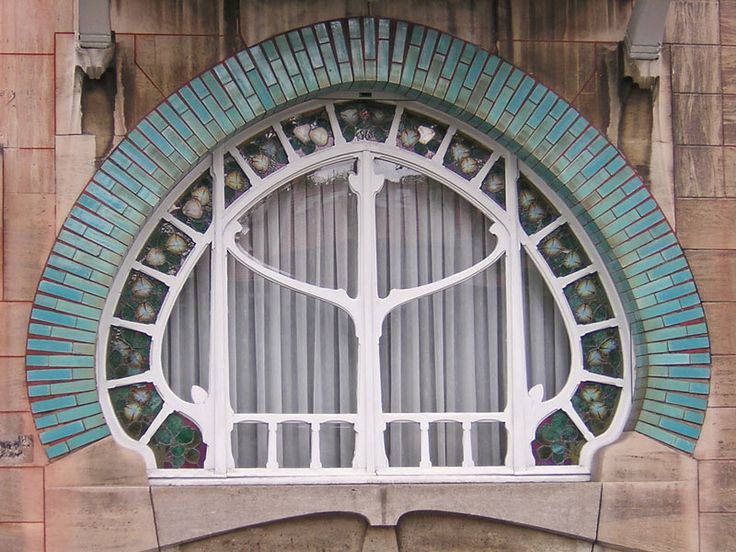#7331. Art Nouveau Facade Window with Turquoise Ceramic Trim

The image showcases an exquisite example of Art Nouveau architecture. The photograph captures a characteristic window with refined framing. The window opening has a horseshoe or keyhole arch shape, which is a distinctive feature of the Art Nouveau style from the early 20th century.
The window is surrounded by decorative turquoise ceramic tiles arranged along the arch curve. Such use of colored ceramics was popular among Art Nouveau architects for creating expressive facade elements. The central part of the window is divided by white frames with fluid, flowing organic forms reminiscent of plant motifs—another characteristic feature of Art Nouveau. Particularly noteworthy is the central vertical element that divides like a tree trunk.
Between the frame and the ceramic tiling is a decorative frieze of colored glass elements, presumably stained glass, with ornamental patterns typical of the Art Nouveau style. The building facade is made of carefully processed sandstone blocks in a sandy color, creating an elegant contrast with the vibrant turquoise ceramics. Light curtains or drapes are visible behind the glass.
This architectural element demonstrates the Art Nouveau masters' aspiration to synthesize functionality and artistic expressiveness, where structural elements simultaneously serve decorative purposes, creating a harmonious unity of form and content.